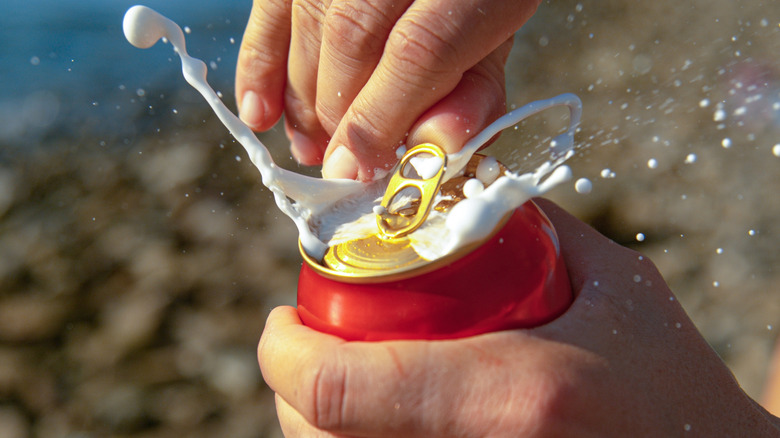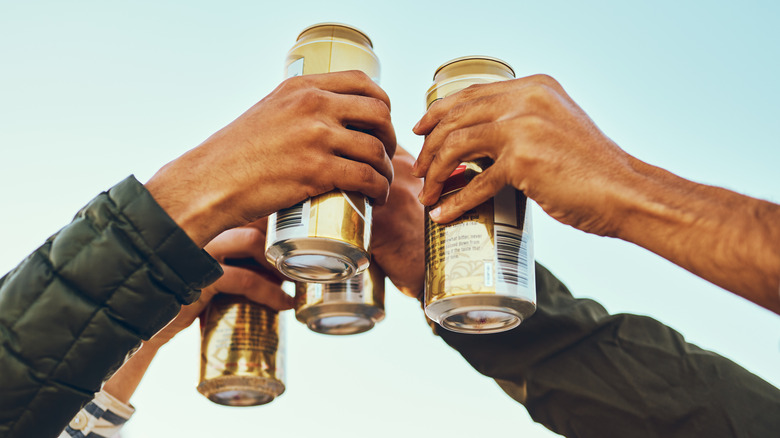What Was The First State To Package Beer In A Can?
Picture your favorite beer. What is it stored in? When you buy beer, it usually comes in bottles or cans — and considering how frequently independent and craft beer is sold in tallboy cans, you'd be hard-pressed to find it in any other container these days. Although beer has been around for thousands of years, cans are a relatively new way of storing it. The beer can only came to exist in 1933 after Gottfried Krueger Brewing Company and American Can produced 2,000 cans of beer to give to Richmond, Virginia residents in a taste test to see if they would drink it. Spoiler alert: They did.
There are a multitude of reasons why beer is sold in aluminum cans today. Cans are lighter than bottles, which means more can be transported at a time, which reduces cost and carbon emissions. They're also opaque, meaning no light can get through; When sunlight hits beer, it can alter its flavor, so beer cans easily resolved that issue. Plus, the aluminum cans provide an airtight seal where no oxygen can get in. While bottle caps are tightly sealed, small amounts of oxygen can seep in over time, altering the beer's flavor. Compared to bottles, beer cans are better for long-term storage. Next time you crack open a cold one, you can thank American Can and Gottfried Krueger for that iconic, crisp sound.
Virginia was the first state to sell canned beer
Back in 1933, the company behind the canning process, American Can, was looking for any brewery that would be willing to experiment with selling its beer in cans. Since bottles were so heavy and expensive to ship, American Can thought it could strike gold with U.S. breweries if it could get people on board with the idea of canned beer. The Newark, New Jersey-based Gottfried Krueger Brewing Company was intrigued by the idea and ultimately gave consent — but on the condition that the beer would be distributed far enough away from New Jersey that the brewery wouldn't be shamed if people hated it. So, American Can settled on distributing the cans six hours away in Richmond, Virginia.
The experiment was far more successful than American Can and Gottfried Krueger anticipated; Of the 2,000 samples given, 91% of those who consumed the beer enjoyed and approved of the beer can. With such high marks, it took almost no time for beer cans to become incredibly popular. By late 1935, more than 200 million beer cans were produced. This has been the primary way to ship beer ever since. Things were made even easier with the invention of a fixed beer tab in 1975, which allowed people to open beer cans without first punching a hole in them. Cheers to that.

